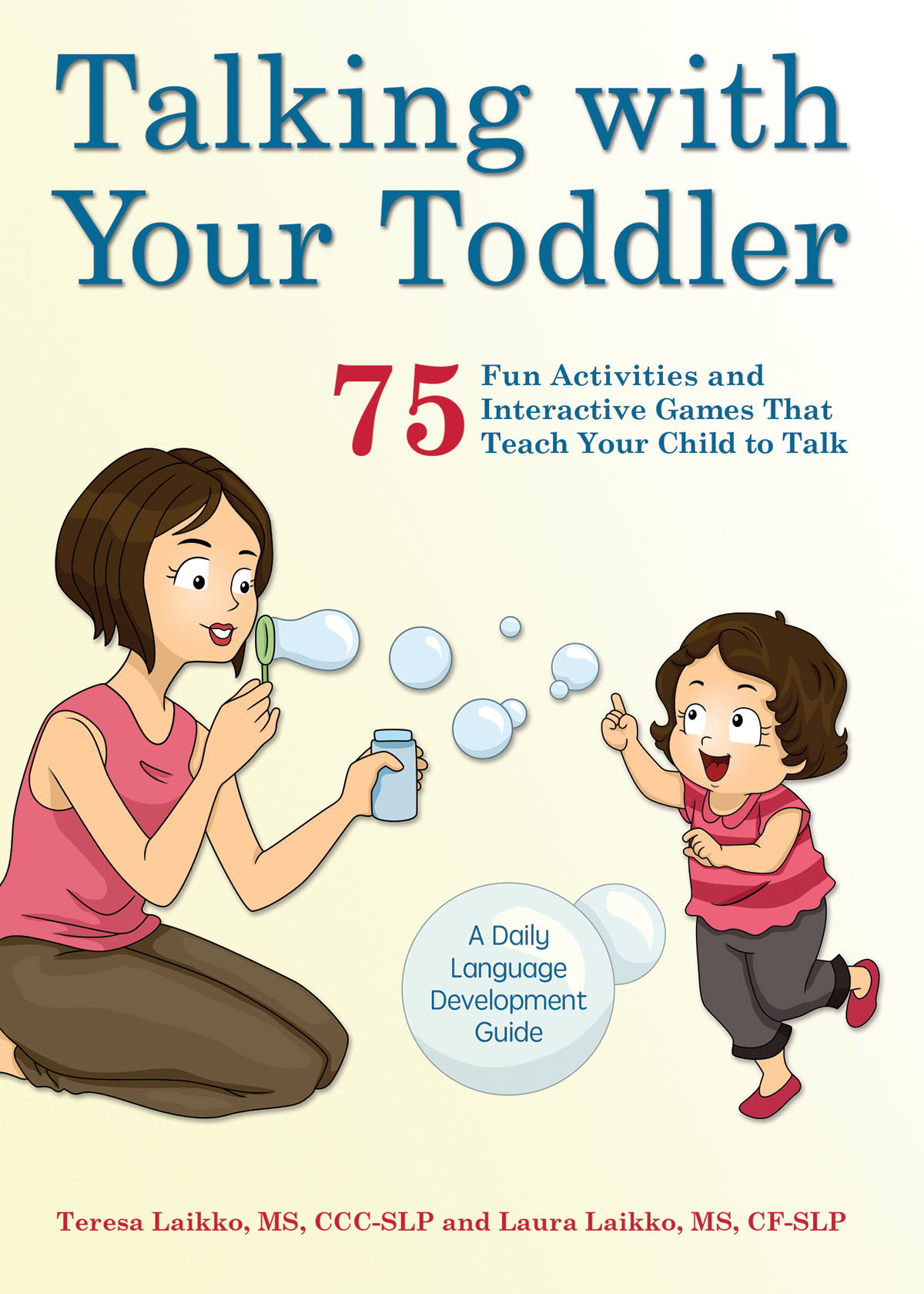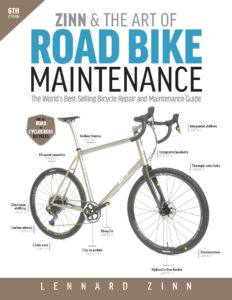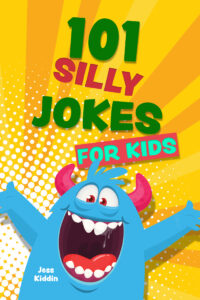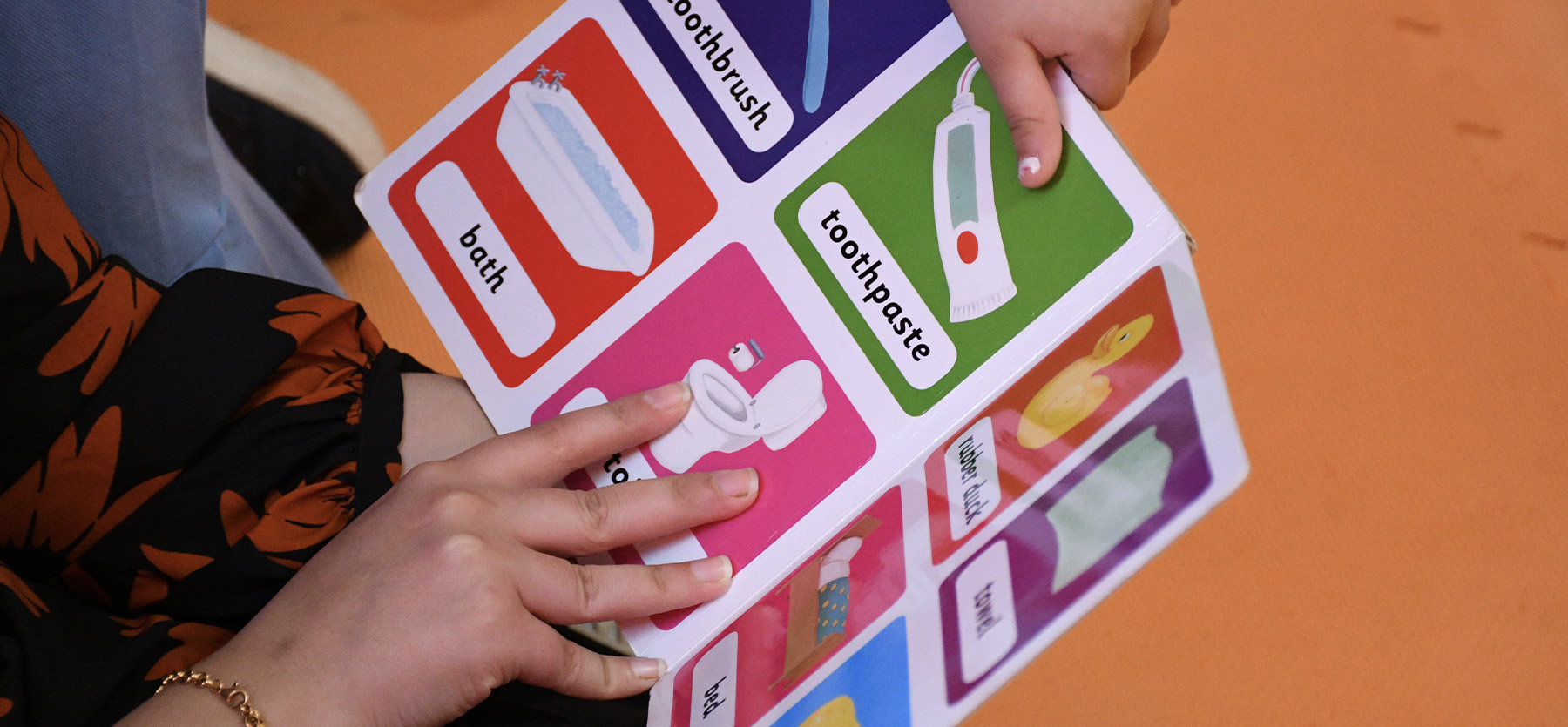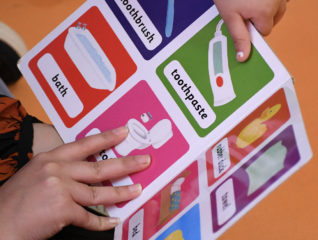
How to Teach Your Child To Talk with New Activity Book for Toddlers
- Book Sample /
- Education
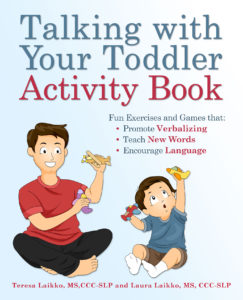 The following is an excerpt from the new book Talking with Your Toddler Activity Book, written by Teresa Laikko, M.S., CCC-SLP and Laura Laikko, M.S., CF-SLP. This fun activity book is packed with family-friendly exercises, conversation topics, and vocabulary recommendations to help your child learn and practice talking. Check out the intro to the book below and download the activities for each season.
The following is an excerpt from the new book Talking with Your Toddler Activity Book, written by Teresa Laikko, M.S., CCC-SLP and Laura Laikko, M.S., CF-SLP. This fun activity book is packed with family-friendly exercises, conversation topics, and vocabulary recommendations to help your child learn and practice talking. Check out the intro to the book below and download the activities for each season.
* * *
Welcome to the Talking with Your Toddler Activity Book! The worksheets and activities in this book are designed to promote language growth in a fun and interactive way. We hope you enjoy working on them with your child.
How to Use These Worksheets
Language growth often occurs when a child is engaged in fun activities with a caring communication partner. As you complete the worksheets with your child, your enthusiasm will encourage their participation and overall enjoyment of the activities. Children are more likely to want to communicate when they are having fun!
Here are some tips for success:
1. Follow your child’s lead. Leaf through the book and see what catches their eye. The book is divided into seasonal activities, but you don’t need to go in order. Let your child’s interest be your guide.
2. Be prepared. Gather the child-safe materials that your child will need to complete the activity, such as crayons, markers, scissors, glue, tape, and other decorative materials (stickers, pompoms, yarn, glitter, etc.).
3. To begin each worksheet, read the directions to your child. See if they can repeat the directions back. (Don’t worry if they can’t! Help them remember each step; it’s good practice.)
4. Remember, the goal of this book is to encourage your child’s language growth while enjoying fun activities. Don’t worry about perfection or following directions exactly. Let your child be creative and make a mess. It will give you something to talk about!
Language Tips for Working with Your Child
You can use several strategies to encourage language production. Most of them will seem like common sense to you, as you are probably already using them.
*Modeling: Look at the activity or picture and talk about what you see using child-friendly language. This provides an adult model that your child can hear and learn from. For example, with our activity making a pretend pizza, you can say, “Let’s make a pizza! It looks so delicious!”
*Wait Time: Give your child time to think and formulate a response or make a comment. Children often require longer wait times to process language and produce their own sentences. Take your time.
*Expand: After your child makes a comment, repeat what they say and expand on it. A good rule of thumb is to add one or two words to your child’s comment. For example, if your child says “pumpkin,” you can say “orange pumpkin!” or “pumpkin is big!” You don’t need to do this every time your child speaks, but an occasional expansion provides your child with additional vocabulary.
*Self-Talk: Talk about what you’re doing and thinking in simple sentences. For example, “I am cutting the paper. I want to color it pink. That’s my favorite color!” Hearing sentences like this will provide your child with more language examples.
*Open-Ended Questions: Using open-ended questions gives your child the chance to respond with more than a yes or no answer. An example of an open-ended question is “What do you like to do when it’s cold outside?” If they have trouble answering an open-ended question, guide them by providing them two choices: “Do you like to go sledding or throw snowballs?”
Extension Activities
Each theme includes ideas for extension activities beyond the worksheets. Pick and choose what appeals to you, and what you think will work best with your child. Don’t worry about completing every idea, as these are only suggestions. In each extension section, we’ll discuss:
*Core Vocabulary: This section includes words that are related to each activity. Try to use them in the conversations that come up naturally as you work together. Hearing a word multiple times will help solidify the concept in your child’s mind. See if your child understands the vocabulary and concepts. For example, if your child has trouble with the concepts of big, medium, and small, use the words in other contexts, such as in relation to what you see around the house: “Look, Dad’s shoes are big! Mom’s shoes are medium, and your shoes are small!”
*Following Directions: Use this extension activity as a way to have fun with the topic! Following directions is a good method to improve your child’s understanding of a theme or concept. In this section, we often recommend playing with a completed project while practicing spatial concepts like in, on, or on top.
*Conversation Topics: These are ideas to expand on the topic and encourage conversation with your child. Remember to use the language tips listed above when talking to your child. Sometimes children just don’t want to talk, and that’s okay too. If the conversation begins to feel more like an interrogation, feel free to take a step back. This is supposed to be fun!
*Book Suggestions: Books are a fantastic way to promote language learning. The library and YouTube are excellent sources to find age-appropriate books. Be sure to preview the entire video before showing it to your child—just in case. To make reading more fun, let your child pick the book based on their interests. We include theme-based suggestions of some of our favorite books if you need ideas.
For younger children, we recommend doing “picture walks” with the book. A picture walk consists of looking through the pictures of the book and talking about what you see. Point out what the characters are doing: “The boy is running! Where do you think he’s going?” If the book is too wordy for your child, go ahead and simplify. No need to read every single word—paraphrase.
*More Activities: These additional ways to play within the theme will help promote and solidify concepts and vocabulary presented in the worksheets. We’ve included some activities to get your child moving or to use imaginative play. Once again, do only what feels right for you and your child.
*Songs and Videos: All of our songs and videos are child-friendly and available on YouTube at the time of this writing. Watch them together and sing along. Replay the videos as much as your child wants, or until they drive you crazy! Sing the songs at other times of the day, such as while driving in the car or when getting ready for bed. Pause the video occasionally and talk about what the characters are doing (for example, “Oh no! She fell down!”). Ask your child what they think will happen next.
Important Things to Remember
While working on these activities with your child, there are several things to keep in mind.
*Set reasonable expectations. Remember that your child is still learning! Some activities include skills they are still developing. For example, fine motor skills like cutting and coloring are challenging for young children. They may require your help using child-safe scissors or holding a crayon appropriately.
*Another developing skill is speech. Young children may not be able to produce all their speech sounds. That’s okay! Repeat what they say using the correct pronunciation of words. The message behind what they say is more important than how they say it. With this workbook, we are targeting the use of language and communication rather than the production of sounds.
*Imperfection and mistakes are part of learning. Be accepting of your child’s attempts to complete the activities. Helping your child is okay, but let them take ownership of their work. Resist the urge to do the activities for them. Give them the opportunity to learn how to do things for themselves. Show pride in what they’ve achieved; focus on the successes and not the imperfections.
*Accept creative differences. Who says a tree needs to be green? A pink tree is very pretty too! Your child might decide to do something completely different, and that’s okay. Talk to them about what they’re doing and encourage them to follow their vision.
Talking with Your Toddler
A handy parent’s guide that turns professional language development into child’s play Every new parent waits expectantly for their child’s first words. But if this milestone is late to arrive, they quickly become concerned. Luckily, Talking with Your Toddler contains speech language techniques that anxious parents can use to encourage
Learn more